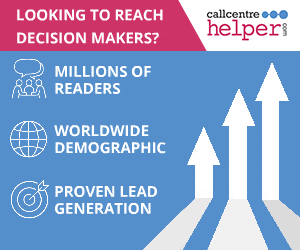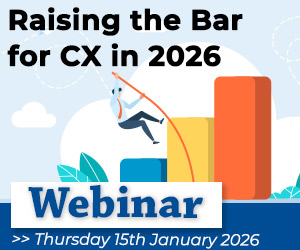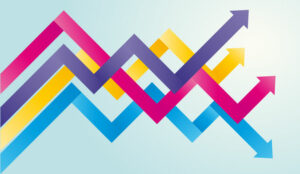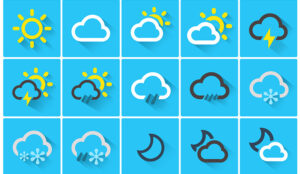Understanding how to break down historical data is the first step to producing meaningful projections.
In this instalment of our video series on the key concepts behind accurate forecasting, Call Centre Helper’s Jonty Pearce explains key building blocks for creating a reliable forecast.
Video: Forecasting Fundamentals: Forecasting Basics
Watch the video below to hear Jonty explain what you need to know about forecasting – focussing on the basics to get you started:
Starting with Time Series Data
The best place to begin is with time series data, which involves plotting contact volumes over time, as Jonty explains:
“The best way to look at a forecast is just to plot out the data over time, something that’s called time series data in a contact centre.
Monthly information is quite good to look at. And what you’ll see here is that you’ve got an interesting pattern of data here.
This shows basically both a trend line, you can see stuff going up over time, and although the trend here seems reasonably consistent over time, it does seem to accelerate a little bit away towards the end.
And what you’ll spot is that there’s also some seasonality, so, for instance, every December there’s actually a little bit of drop-off in traffic. This may well be because the contact centre is closed during that period.”
Monthly data is especially useful, as it helps highlight longer-term patterns.
From a simple chart, you can often identify two key things:
- A trend, where contact volumes rise or fall over time
- Seasonality, where specific months or periods show regular increases or decreases
The Three Forecasting Components
A good forecast is built by identifying three separate elements:
- Level – the current baseline volume of contacts
- Trend – how that level changes from one period to the next
- Seasonality – the regular fluctuations that occur throughout the year
When combined, the level and trend form a trend line, and adding the seasonal component gives you a fuller picture.
“So, the first thing you need to do in forecasting is to really try and break the whole forecast down into three different components. And that is what’s called level, which is the level that you’re at currently. The trend, which is the difference between one period and the next.
And if you take the level and trend together you can form a trend line, which is the overall approach. And also, to look at the seasonality, that is how much do things vary over season.
Once you’ve done that, you can do something like make a weekly or an annual forecast based on that.”
This structure allows you to create weekly, monthly, or even annual forecasts with greater accuracy.
Identifying Trends and Patterns
Looking at several years’ worth of data, gives a clearer sense of trends, and once a linear trend line is applied, you can begin to model seasonality.
“Now you’ve got the data, the first thing you can do to that is try and work out some form of trend line. This is a linear trend line that we’ve applied here. Once you’ve got the linear trend line you need to then try and determine some form of seasonal pattern.
So, you try and get some form of regular seasonality being added to that data. And then once you’ve built your seasonality model, and once you’ve built your trend line, you can use that data then to predict off into the future.”
Seasonal modelling looks at regular ups and downs across the year. For example, contact volumes may consistently drop in January and rise in December. Spotting this allows you to plan ahead more effectively.
A Common Seasonality Mistake
A frequent mistake in seasonal analysis is relying on just 12 months of data. Many people total the contacts for the year, then calculate each month as a percentage of that total, as Jonty continues:
“One of the common mistakes that a lot of people tend to make when working out seasonality, is to basically say look at 12 months’ worth of data.
And one of the things they do is, for instance, and here’s a whole load of contact data, this is made up data. So, what you see here is that you’ve got a lower number of contacts in January, higher in December, and you basically add all of that together, that gives you a number for the annual contact volume.
You then work that out as being 100%, and then you can work at a percentage, and then if you take the average of one 12th of that, you could then work out a seasonality figure, starting at 62%, 132%.
So that’s one thing that a lot of people do, but there is one problem with this and that’s that it’s assuming that this data goes down.”
But this method assumes contact volumes are flat throughout the year, which they often aren’t. In reality, volumes might rise steadily over time.
De-Trending and De-Seasonalising
To get accurate seasonality figures, you first need to remove the trend from the data. This step is called de-trending.
Once the trend is removed, you can then calculate how much each period varies from the average, this is your seasonal factor.
“What you see here is that generally at the beginning of year the numbers are lower, and the end of the year it’s higher.
So, what you’ve got to work out is what the trend component is of that. So, what you have to do – is you, first of all, need to de-trend and then de-seasonalize the data, so you then effectively work out what your trend is, take your trend and remove the trend from your data, and then work out what your percentage seasonality is over the year.”
Only after de-trending and de-seasonalising should you apply these patterns to future forecasts. This helps separate what’s truly seasonal from what’s just part of a long-term increase or decrease.
Why It Matters
By breaking your forecast into level, trend, and seasonality, and using multi-year data, you’ll avoid common pitfalls and improve accuracy.
Understanding the basics allows you to build stronger models that reflect real customer behaviour – not just rough estimates based on last year’s numbers.
If you are looking for more great insights from Jonty, check out these next:
- Is Overhang Distorting Your Staffing Calculations?
- How Accurate is Your Forecasting?
- The Erlang C Formula
- Maximum Occupancy – The Most Common Resource Planning Mistake
Author: Jonty Pearce
Reviewed by: Robyn Coppell
Published On: 2nd Apr 2024 - Last modified: 12th Jun 2025
Read more about - Video, Forecasting, Top Story, Videos
















